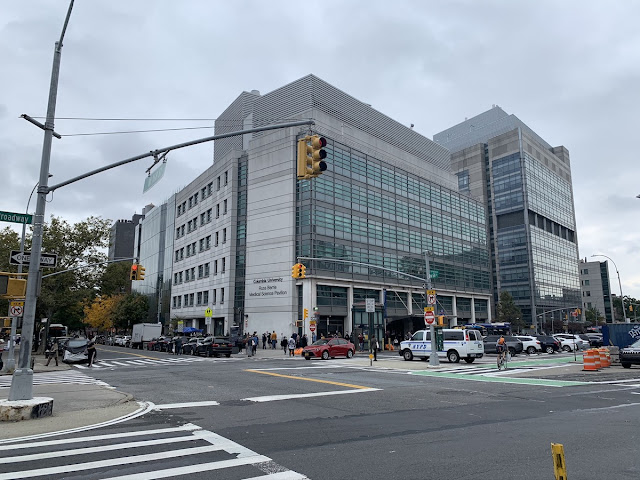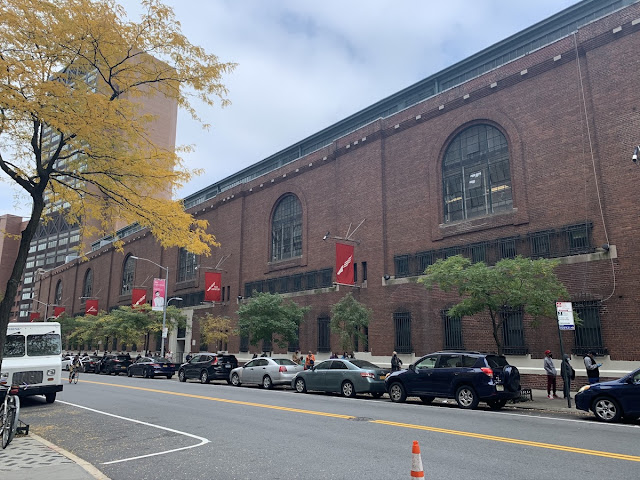Early Voting in Washington Heights, and A Walk
 |
| A line to vote in Washington Heights. The line stretched around the block multiple times. |
Madison Square Garden in Manhattan and the Barclay’s Center in Brooklyn were two of the well-known sites, but most voting places were typical neighborhood places such as schools, churches, and hospitals.
 |
| The scene outside the entrance to the Russ Berrie Medical Science Pavilion, one of the early voting locations in Washington Heights. |
In Washington Heights in Upper Manhattan, two early voting locations were within a short walk of one another, causing some confusion for voters emerging from the 168th Street subway station. The Columbia University Russ Berrie Medical Science Pavilion, at 1150 St. Nicholas Avenue, was the closest to the train stop. The Fort Washington Avenue Armory at 216 Ft. Washington Avenue is located a couple of blocks to the west.
 |
| The Columbia University Russ Berrie Medical Science Pavilion was one of the early voting sites in Washington Heights. |
On Saturday, I dropped off my absentee ballot at the medical science pavilion around noon. As the rules allow bypassing the line to drop off absentee ballots in a box just inside the building entrance, I made my way around and around the block. At the beginning of the line, poll workers directed traffic and led cheers for those emerging from the building, many with the “I Voted Early” stickers on their lapels.
 |
| The Columbia Mailman School of Public Health |
The medical science building lies within the sprawling campus of the NewYork-Presbyterian Hospital / Columbia University Irving Medical Center at 168th Street. The hospital campus stretches over 20 acres, with specialty departments and teaching facilities. The Columbia Mailman School of Public Health is located here. As the COVID-19 pandemic has shaped the election and how we vote this year, standing in a long line at one of New York’s largest hospitals brought the issue home.
 |
| Voters wait in line at the Fort Washington Armory |
At the Fort Washington Armory, the line also wrapped around the block. The Armory itself is worth seeing. Built in the early 20th century for the 22nd Regiment of the Army Corps of Engineers, the Armory now houses the National Track and Field Hall of Fame and New Balance Track and Field Center along with other organizations.
 |
| At The Armory |
The Armory is a mighty looking structure, especially for an election characterized by voter insecurity.
 |
| Roy and Diana Vagelos Education Center |
The streets on the west side near the hospital are worth exploring on foot. Take a stroll north on Haven Avenue to look at the Roy and Diana Vagelos Education Center (104 Haven Ave). An unmistakable signature building from the architecture firm of Diller Scofidio + Renfro, the 15-story tower was designed to function as a center for interactive learning.
 |
| Autumn in J. Hood Wright Park |
The walks ends in J. Hood Wright Park. Named for the former owner of the site, the park includes courts and play facilities but is best known for its exceptional view of the George Washington Bridge.
 |
| View of the George Washington Bridge |
And the bridge is named for George Washington, the general who led the defense of New York from this very area during the American Revolution in 1776. After the first presidential election in 1789, Washington took his oath of office on April 30, 1789, at Federal Hall in New York City.
Images from Saturday, October 24, 2020.





Comments
Post a Comment